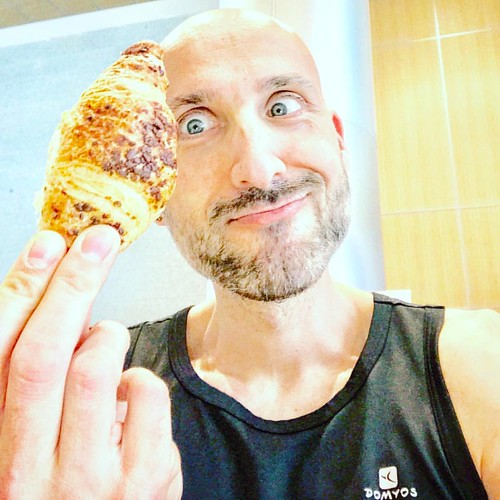as not affected by the expression of these proteins. To further corroborate these results, we next evaluated the role on DENV infection of Rab11, other member of Rab GTPases involved in the last step of transport in the slow recycling route, from recycling endosomes to the plasma membrane. Vero 8 Endocytic Trafficking of Dengue Virus 9 Endocytic Trafficking of Dengue Virus cells were transfected with the wt  and DN Neuromedin N web mutant S25N versions of Rab11 fused to Green Lantern, a modified version of GFP, and then infected. The expression of the DN Rab11 S25N exerted a moderate inhibitory effect against DENV-1 HW and DENV-2 NGC, but the multiplication of DENV-2 16681 was not affected. Finally, the presence of DENV-2 NGC and DENV-2 16681 particles in recycling and late endosomes, respectively, during the entry pathway into Vero cells was verified by colocalization of viral nucleocapsids with Rab11 and Rab7, markers of recycling and late endosomes, respectively. As seen in Fig. 6D, after 15 min of internalization DENV-2 16681 capsids were detected inside Rab7 positive vesicles whereas DENV-2 NGC capsids colocalized mainly with Rab11. In conclusion, the three DENV strains appeared to locate first at the early endosomes, then DENV-2 16681 should be transported to late endosomes through the degradative pathway whereas DENV-1 HW and DENV-2 NGC employed the slow recycling route to the perinuclear recycling endosomes. Discussion independent manner. Another experimental approach allowed us to support the first option, since when trafficking to late endosomes was inhibited by treatment with the drug wortmannin, only DENV-2 16681 particles were retained in Rab5 positive compartments. Noticeably, the infection of Vero cells with DENV-1 HW was also dependent of Rab5 functionality but independent of Rab7, suggesting that these virions do not reach late endosomes similarly as observed with DENV-2 NGC. Our previous studies demonstrated through molecular and biochemical approaches that different endocytic pathways were exploited by DENV-1 and DENV-2 for internalization into Vero cells, a phenomenon that is strain-independent as shown in Fig. 1. Then, the intracellular trafficking of DENV particles until membrane fusion appears to be variable and independent of the route for initial virion uptake. Morphological and biochemical analysis of the endocytic pathway, as well as tracking studies of fluorescently labeled particles in live cells indicate that cargo delivered from the surface typically reaches early endosomes in less than 2 min after internalization, late endosomes in the perinuclear region after 1012 min, and the lysosomes within 3060 min. Accordingly, viruses like lymphocytic choriomeningitis virus and Uukuniemi virus which penetrate from late endosomes, exhibit a half time of membrane penetration of 1020 min while viruses fusing in early endosomes, such as vesicular stomatitis virus or Semliki Forest virus, penetrate within 5 min after internalization. Through a susceptibility to ammonium chloride assay we showed that regardless the virus strain or serotype the first DENV particles reached the acid-dependent step 5 min after cell warming and half of the incoming infectious particles passed the ammonium chloride-sensitive step within 1416 min postinternalization. These results are in line with previous fusion kinetics studies of other DENV-2 strains. This late penetration kinetics indicates that in spite of their Rab7independent multiplication, DENV-2 NGC a
and DN Neuromedin N web mutant S25N versions of Rab11 fused to Green Lantern, a modified version of GFP, and then infected. The expression of the DN Rab11 S25N exerted a moderate inhibitory effect against DENV-1 HW and DENV-2 NGC, but the multiplication of DENV-2 16681 was not affected. Finally, the presence of DENV-2 NGC and DENV-2 16681 particles in recycling and late endosomes, respectively, during the entry pathway into Vero cells was verified by colocalization of viral nucleocapsids with Rab11 and Rab7, markers of recycling and late endosomes, respectively. As seen in Fig. 6D, after 15 min of internalization DENV-2 16681 capsids were detected inside Rab7 positive vesicles whereas DENV-2 NGC capsids colocalized mainly with Rab11. In conclusion, the three DENV strains appeared to locate first at the early endosomes, then DENV-2 16681 should be transported to late endosomes through the degradative pathway whereas DENV-1 HW and DENV-2 NGC employed the slow recycling route to the perinuclear recycling endosomes. Discussion independent manner. Another experimental approach allowed us to support the first option, since when trafficking to late endosomes was inhibited by treatment with the drug wortmannin, only DENV-2 16681 particles were retained in Rab5 positive compartments. Noticeably, the infection of Vero cells with DENV-1 HW was also dependent of Rab5 functionality but independent of Rab7, suggesting that these virions do not reach late endosomes similarly as observed with DENV-2 NGC. Our previous studies demonstrated through molecular and biochemical approaches that different endocytic pathways were exploited by DENV-1 and DENV-2 for internalization into Vero cells, a phenomenon that is strain-independent as shown in Fig. 1. Then, the intracellular trafficking of DENV particles until membrane fusion appears to be variable and independent of the route for initial virion uptake. Morphological and biochemical analysis of the endocytic pathway, as well as tracking studies of fluorescently labeled particles in live cells indicate that cargo delivered from the surface typically reaches early endosomes in less than 2 min after internalization, late endosomes in the perinuclear region after 1012 min, and the lysosomes within 3060 min. Accordingly, viruses like lymphocytic choriomeningitis virus and Uukuniemi virus which penetrate from late endosomes, exhibit a half time of membrane penetration of 1020 min while viruses fusing in early endosomes, such as vesicular stomatitis virus or Semliki Forest virus, penetrate within 5 min after internalization. Through a susceptibility to ammonium chloride assay we showed that regardless the virus strain or serotype the first DENV particles reached the acid-dependent step 5 min after cell warming and half of the incoming infectious particles passed the ammonium chloride-sensitive step within 1416 min postinternalization. These results are in line with previous fusion kinetics studies of other DENV-2 strains. This late penetration kinetics indicates that in spite of their Rab7independent multiplication, DENV-2 NGC a
Interleukin Related interleukin-related.com
Just another WordPress site
